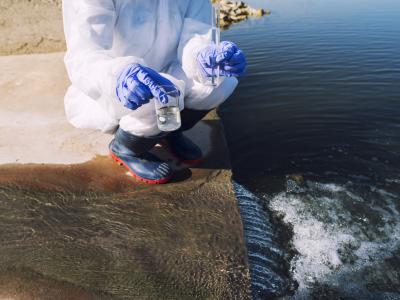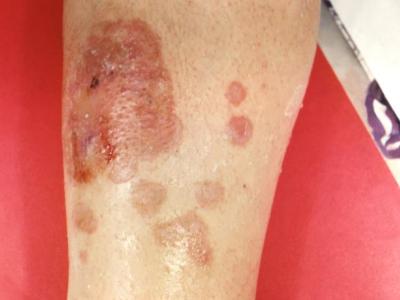A 2023 outbreak of Shiga toxin–producing Escherichia coli O157:H7 in Utah that sickened at least 13 children was traced to contaminated irrigation water the children used for drinking and playing, according to a report from scientists from Utah and the Centers for Disease Control and Prevention (CDC).
The account, published yesterday in Morbidity and Mortality Weekly Report, points to the need to educate residents of communities that have untreated, pressurized municipal irrigation water (UPMIW) about the risks of drinking or playing in the water.
UPMIW is piped primarily from mountain snow melt and carried more than 30 miles by river and an underground pipeline to open reservoirs before being pumped to outdoor connections at all city homes and businesses, the study authors noted.
Municipal irrigation water systems, used in some Utah communities for residential irrigation and fire suppression, are designed to conserve drinking water and reduce treatment costs. But they are also an underrecognized source of waterborne illness. "It [UPMIW] is intended for outdoor landscapes (lawns and gardens) and is not suitable for drinking or recreational activities," the study authors noted. "UPMIW is not routinely monitored or tested."
Animal feces in open reservoirs implicated
In the July to September 2023 outbreak, 12 of the 13 infected children (median age, 4 years) reported drinking and playing in the contaminated water in the week before symptom onset.
The median incubation period for those with known exposure dates was 3 days. Activities included playing with hose water (5), inflatable lawn water toys (3), and water tables (2); drinking (2); and running through a sprinkler (1). None of the children reported eating homegrown produce irrigated with UPMIW.
"Utah water providers have previously instructed residents to not drink or play in UPMIW; however, recent population growth within city A might have resulted in residents who arrived more recently being uninformed about UPMIW-associated risks," the researchers wrote. The city was not named in the report.
Seven children were hospitalized—two of them with hemolytic uremic syndrome (HUS). HUS, a complication of diarrheal infection, usually with E coli, can lead to kidney failure or death, especially in children younger than 5 years and those with weakened immune systems. All the children recovered, however.
Whole-genome sequencing of patient E coli isolates revealed a close genetic relationship to each other and to environmental isolates from multiple locations (eg, sediment, bird feces from reservoirs, spigots, hoses, toys). The bacteria were isolated from reservoir sediment and water from five of nine exposure sites. Microbial-source tracking pointed to fecal contamination from birds and ruminant animals such as cattle and sheep.
Importance of risk communication
City officials issued three news releases and a mailing to remind residents not to drink or recreate in the irrigation water, cook homegrown produce, or water lawns. The city is evaluating other prevention methods such as water treatment and reservoir cleaning.
Public education and UPMIW management and operations interventions ... to communicate risk and intended use might help prevent future UPMIW-associated illnesses.
On August 22, the Utah Department of Health and Human Services released a Health Alert Network message to encourage healthcare providers to perform stool testing for patients with diarrhea, look for signs and symptoms of HUS, and not prescribe antibiotics for Shiga toxin–producing E coli O157:H7 because they might raise the risk of HUS.
The researchers called for education of residents about the risks of using irrigation water for unintended purposes and for improving the management and risk mitigation of these untreated irrigation systems.
"Public education and UPMIW management and operations interventions, including assessing and mitigating potential contamination sources, covering UPMIW sources and reservoirs, indicating UPMIW lines and spigots with a designated color, and providing conspicuous signage to communicate risk and intended use might help prevent future UPMIW-associated illnesses," the researchers concluded.




















